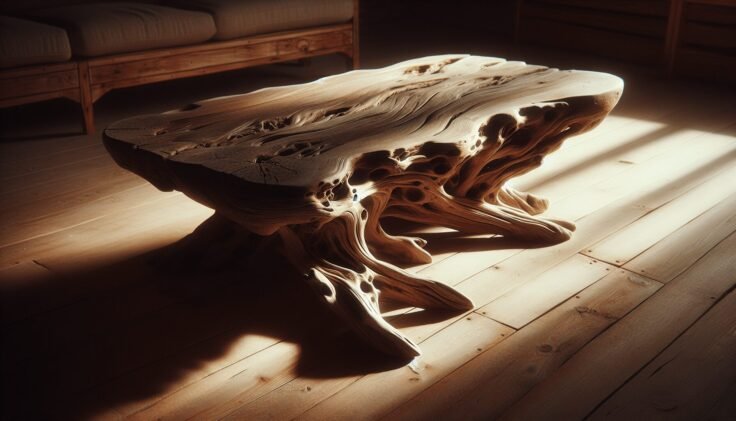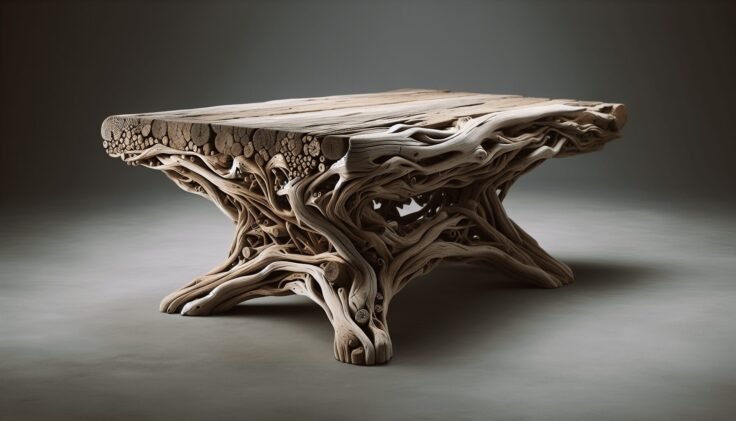Have you ever wondered about the unique charm that driftwood adds to your home decor or furniture pieces? Driftwood joinery is an intricate craft that combines the beauty of naturally weathered wood with skilled woodworking techniques. This form of joinery has captured the imagination of artisans and homeowners alike, offering a distinctive aesthetic that simply can’t be replicated with traditional lumber.
What is Driftwood Joinery?
Driftwood joinery involves the assembly of furniture and decor items from pieces of driftwood. Driftwood itself is wood that has been washed onto a shore, lake, river, or estuary by the action of winds, tides, or waves. Its weathered appearance and irregular shapes make each piece unique, giving any final product a one-of-a-kind appeal. Using driftwood in joinery not only makes for beautiful creations, but also promotes the sustainable use of resources, as it recycles materials that would otherwise be left unused.
The Origins of Driftwood
Driftwood is created by the natural process of erosion and exposure. When trees and other wood material are borne by water currents, they gradually lose their bark and are stripped of the softer outer layers, leaving behind the harder heartwood. This process can take years and results in the smooth, unique shapes and textures that give driftwood its charm.
Why Use Driftwood?
The allure of driftwood in joinery lies not just in its aesthetic appeal, but also in its environmental benefits. Driftwood is an eco-friendly, sustainable material. By using driftwood, you are not only creating something beautiful, but also supporting efforts to reuse materials that would otherwise go to waste.
How to Select Driftwood for Joinery
Selecting the right pieces of driftwood is crucial to creating beautiful and functional items. When choosing driftwood, consider its size, durability, color, and shape.
Size and Shape
Driftwood comes in various shapes and sizes. Some pieces may be long and slender, while others are short and chunky. The size and shape of driftwood will determine its use. For example, a long piece may make an ideal table leg, while smaller pieces can be used for decorative elements or smaller accents.
Durability and Stability
Not all driftwood is created equal in terms of durability. Some pieces might be overly weathered and weak, while others remain sturdy. To create enduring furniture pieces, ensure you select driftwood that is stable and free from excessive cracks or soft spots.
Color and Texture
The color and texture of driftwood can vary widely. From pale grays and whites to dark browns and blacks, the spectrum is vast. Choose pieces that complement the intended aesthetic of your project. Keep in mind that the natural texture of driftwood can add a lot of character to your creations, especially when juxtaposed with smoother woods or other materials.

Preparing Driftwood for Joinery
Thorough preparation is important before you begin working with driftwood. Properly cleaning, drying, and protecting the wood ensures it remains beautiful and durable for years to come.
Cleaning the Driftwood
Cleaning the driftwood is the first major step. Remove any debris, dirt, or organisms that have adhered to the wood during its time in the water and on the shore. This can be done using a stiff brush and a mild cleaning solution. Be thorough in this process to ensure a clean working material.
Drying
Driftwood must be completely dried before it is used in joinery. Moisture content can lead to deformities over time or even attract pests. Allow the wood to dry naturally in a warm, airy space. Depending on the size of the wood, this may take several weeks. Using a dehumidifier or kiln can speed up the process, but care must be taken to prevent cracking.
Treatment and Preservation
Once dry, treat the wood to preserve it. Applying a wood preservative, such as a sealant or finish, can protect it from moisture and potential damage due to climates or insects. Some prefer to lightly sand the wood to achieve a smoother finish, while others opt to leave the natural texture untouched. This choice will depend on personal preference and the design of the final piece.
Techniques in Driftwood Joinery
When working with driftwood, using the right joinery techniques can make all the difference in the stability and appearance of your creations. Let’s explore some methods commonly used by artisans.
Mortise and Tenon
The mortise and tenon technique is one of the strongest joints used in woodworking. It involves a projection called a tenon that is inserted into a cavity known as a mortise. This technique is straightforward yet provides a solid connection that can bear weight well, especially important for furniture like chairs or tables.
Dowel Joints
Dowel joints are another great option for driftwood joinery. These involve inserting small cylindrical rods (dowels) into corresponding holes in two pieces of wood. This method is strong and helps maintain the natural look of driftwood, as it requires minimal alteration to the wood’s surface.
Biscuit Joints
Biscuit joints are helpful in aligning pieces precisely. A small, oval-shaped piece of compressed wood (biscuit) is inserted into matching slots on two pieces to be joined. As the biscuit absorbs moisture from the glue, it swells and forms a tight joint. This technique is ideal when aligning irregular shapes often found in driftwood.
Creative Connections
Beyond traditional techniques, creative and decorative connections can showcase the unique properties of driftwood. Metal brackets, ropes, or even leather ties can be employed not only to join pieces but also to enhance the overall aesthetic appeal.

Driftwood Joinery Projects
The versatility of driftwood makes it suitable for a wide range of projects. Furniture, decor, and even functional household items can be crafted from this beautiful material.
Driftwood Furniture
From tables and chairs to shelves and bed frames, driftwood can create stunning pieces of furniture. Its natural appearance lends a rustic vibe that blends seamlessly into beach houses, cabins, and modern homes alike.
Driftwood Decor
Driftwood is frequently used in decorative projects due to its artistic potential. Wall hangings, sculptures, mirrors with driftwood frames, and chandeliers can be crafted to add a touch of natural elegance to any room.
Functional Art Pieces
Beyond aesthetics, driftwood can also be transformed into practical items. Consider driftwood coat racks, key holders, or even kitchen utensils that merge function with artistic design.
Maintaining Driftwood Creations
Once you’ve completed your driftwood project, maintaining it is key to ensuring it remains beautiful and functional for years to come.
Regular Cleaning
Dust and dirt can accumulate on driftwood over time. Use a soft, dry cloth to gently wipe down your piece on a regular basis. Avoid using water or harsh chemicals that may damage the wood.
Protective Sealing
If you used a protective finish for your driftwood, you may need to reapply it annually, depending on the environment and usage. Regular re-sealing can keep the wood looking fresh and guard against moisture damage.
Careful Placement
Consider where your driftwood creation is placed. Avoid exposing it to extreme temperatures or moisture, such as near heating vents, fireplaces, or in bathrooms. Making sure it’s properly positioned will extend its lifespan.
Embrace the Art of Driftwood Joinery
Driftwood joinery is a fulfilling activity that harnesses the beauty of nature and the skill of the craftsperson. Whether you’re looking to decorate your home, create functional art, or simply enjoy the woodworking process, working with driftwood offers a unique opportunity to produce intricate, one-of-a-kind pieces. As you embark on this rewarding journey, you’ll find that the natural elegance of driftwood coupled with the hands-on craft of joinery creates an unparalleled creativity outlet.



